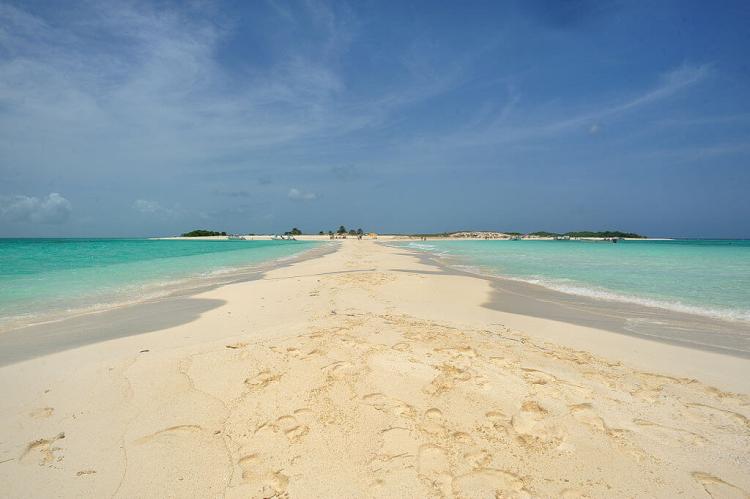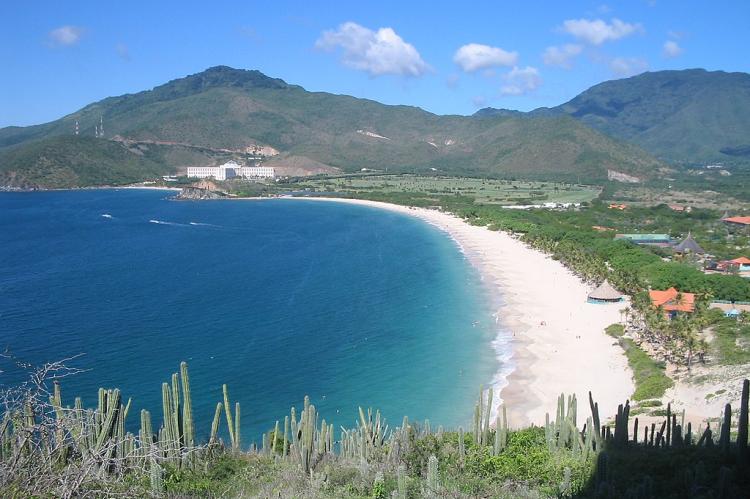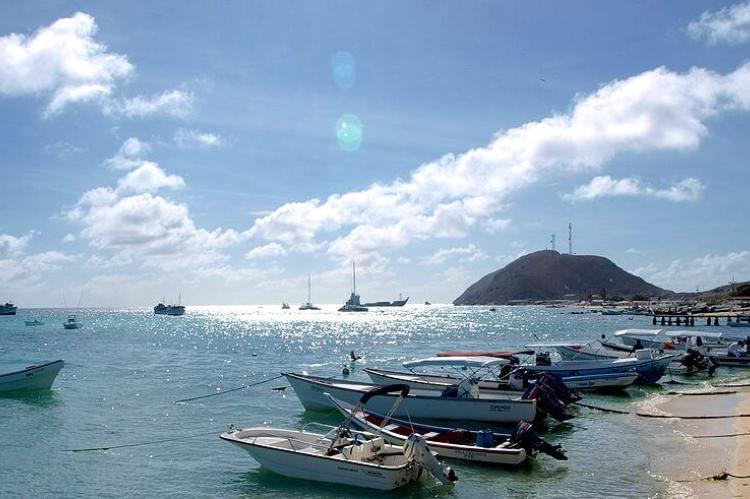Islands and Archipelagos of Venezuela
Venezuela has stunning islands in the Caribbean Sea and the Gulf of Venezuela, including Los Roques Archipelago, a national park with over 300 islands. Margarita Island is known for its palm-fringed beaches and cultural significance. These islands are important habitats for endangered fauna.
Islands and Archipelagos of Venezuela
Venezuela's islands and archipelagos, nestled within the azure waters of the Caribbean Sea and the Gulf of Venezuela, are treasures to explore. From the sun-drenched beaches of the Los Roques Archipelago to the lush greenery of Margarita Island, each destination offers a unique blend of natural beauty and rich history. Los Roques, a national park comprising over 300 islands and cays, boasts some of the Caribbean's most pristine coral reefs, making it a paradise for snorkelers and divers alike. Meanwhile, with its bustling towns and vibrant culture, Margarita Island provides a glimpse into Venezuela's colonial past and offers visitors the chance to unwind on palm-fringed beaches or explore the island's rugged interior.
Beyond these well-known destinations, Venezuela's islands hold a wealth of ecological importance, serving as vital habitats for a diverse array of flora and fauna. For example, the archipelagos of Las Aves and Las Hermanas are havens for seabirds and marine life. At the same time, the rugged coastlines of the Paria Peninsula provide nesting grounds for endangered sea turtles. As stewards of these precious ecosystems, Venezuela's islands invite travelers to appreciate their natural wonders while learning about the country's rich cultural heritage and environmental conservation efforts. Venezuela's islands offer endless opportunities for exploration and discovery amidst breathtaking landscapes and vibrant communities.
Archipelagos and Island Groups
Los Roques Archipelago (Archipiélago de Los Roques): The Los Roques Archipelago is a group of approximately 350 islands, cays, and islets in the Caribbean Sea, about 128 km (80 mi) north of the port of La Guaira. It is a popular tourist destination for its pristine coral reefs and white-sand beaches.
Los Monjes Archipelago (Archipiélago Los Monjes): The Los Monjes Archipelago is a series of 24 rocky islets located north of the Gulf of Venezuela. It is notable for its ecological importance and marine biodiversity.
Los Hermanos Archipelago (Archipiélago Los Hermanos): Los Hermanos Archipelago comprises a chain of eight rocky, barren islets off the northern coast of Venezuela in the Caribbean Sea, part of the Lesser Antilles.
Las Aves Archipelago (Archipiélago Las Aves): The Las Aves Archipelago is a group of about 50 islands and islets located about 600 km (370 mi) north of the coast of Venezuela. Known for its shipwrecks, the archipelago is uninhabited and protected for its seabirds.
Los Frailes Archipelago (Archipiélago Los Frailes): The Los Frailes Archipelago is a group of ten islands located about 250 km (155 mi) north of the coast of Venezuela. The islands are uninhabited and are a protected area for seabirds.
Islas Los Testigos: Los Testigos is a group of six islands and a couple of islets located about 200 km (124 mi) north of Venezuela's northeastern coast. The islands are known for their beaches, hiking trails, and birdlife and are popular for snorkeling and diving.
Islas Borrachas: Islas Borracha is a group of islands in the Caribbean Sea with three main islands and several islets located northwest of Puerto la Cruz.
Islas Chimanas: Islas Chimanas is a group of seven islands situated off northeastern Anzoategui state, east of the Borrachas Islands.
Islas de Mochima: Islas de Mochima is a group of islands within the Mochima National Park off the northeastern coast of Venezuela, popular for its beauty and recreational activities.
Islas Las Tetas de María Guevara: Islas Las Tetas de María Guevara are known for their unique twin-peaked hills, located off the coast of Sucre state.
Notable Islands
Margarita Island (Isla de Margarita): Margarita Island is the largest and most well-known island in Venezuela, famous for its beaches, resorts, and cultural attractions.
Coche Island (Isla de Coche): Located near Margarita Island, Coche Island is known for water sports and tourism, especially kiteboarding and windsurfing.
Cubagua Island: Cubagua Island is historically significant for its pearl diving industry and is now known for its archaeological sites.
La Tortuga Island (Isla La Tortuga): La Tortuga Island is a remote island known for its pristine beaches, coral reefs, and opportunities for diving and ecotourism.
La Blanquilla Island (Isla La Blanquilla): La Blanquilla Island is characterized by its white sand beaches, clear waters, and unique rock formations, ideal for diving and fishing.
Orchila Island (Isla de Orchila): Orchila Island is a restricted island with historical significance, known for its untouched landscapes and military importance.
Patos Island (Isla de Patos): Situated in the Gulf of Venezuela, Patos Island is recognized for its sandy beaches and calm waters, which are suitable for boating and fishing.
Isla de Aves: Isla de Aves is a remote island in the Caribbean Sea, a significant seabird breeding site.
Isla de Toas: Isla de Toas is situated in Lake Maracaibo and is known for its fishing communities and cultural heritage.
Isla de Patanemo: Isla de Patanemo, located in the Caribbean Sea, is noted for its natural beauty.
Isla Zapara: Located in Lake Maracaibo, Isla Zapara is known for its indigenous communities and natural features.

Venezuela administrative map.



![Playa La Salina, Margarita, Nueva Esparta, Venezuela - via Wikimedia Commons - User:The Photographer [CC0] Playa La Salina, Margarita, Nueva Esparta, Venezuela](/sites/default/files/styles/large/public/playa_la_salina_margarita_nueva_esparta_venezuela_opt.jpg?itok=Iv0Ih6RR)
![Playa El Amor, Isla de Coche, Nueva Esparta, Venezuela - via Wikimedia Commons User:The Photographer [CC0] Playa El Amor, Isla de Coche, Nueva Esparta, Venezuela](/sites/default/files/styles/large/public/el_amor_beach_coche_island_opt.jpg?itok=cw4pmf5P)
